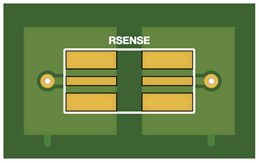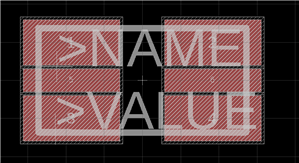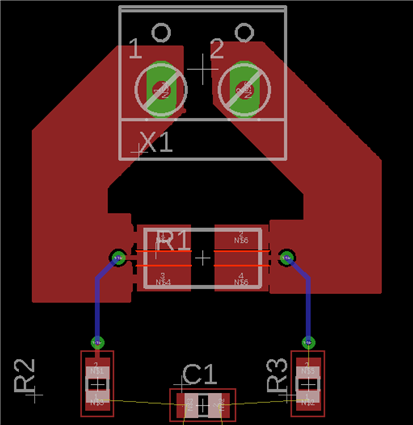Hey everyone!
I'm still learning eagle, so some obvious things are still difficult for me to wrap my head around, but I'm learning!
I have a question regarding Kelvin connections in Eagle. I have a board I need to design that performs current sensing. It has 2 input jacks, 2 output bnc jacks (that go to a differential amplifier) and a shunt resistor to measure the voltage drop across. My supervisor has asked me to implement the following pad layout for the kelvin connection with this shunt resistor: https://www.bourns.com/docs/Product-Datasheets/css2h-2512.pdf
To do this the only approach I could come up with was to design a new footprint for the shunt resistor in which both sides have 3 pads. So I came up with this footprint (Bourns_CSS2H-2512-A in this library: https://github.com/joshvandermeer/Eaglelibrary )
Then when I try to connect to the pads manually using the polygon tool in eagle, I get the following:
Where it looks like each pad has a maximum trace width for the trace connecting to it. This circuit will have a high current, so I want the traces to connect completely, not just by a thin trace at the terminals.
Is there anything I can do to improve this situation? I'm new to this, so I'm sure I'm overlooking something important, and I really appreciate any advice!
Thank you!



